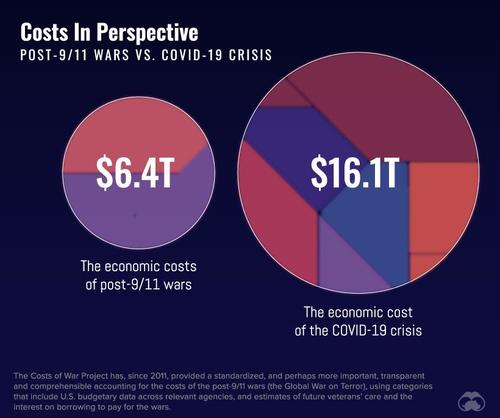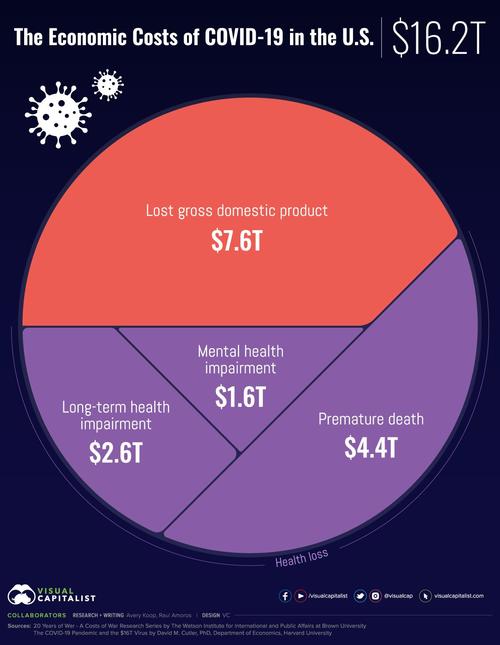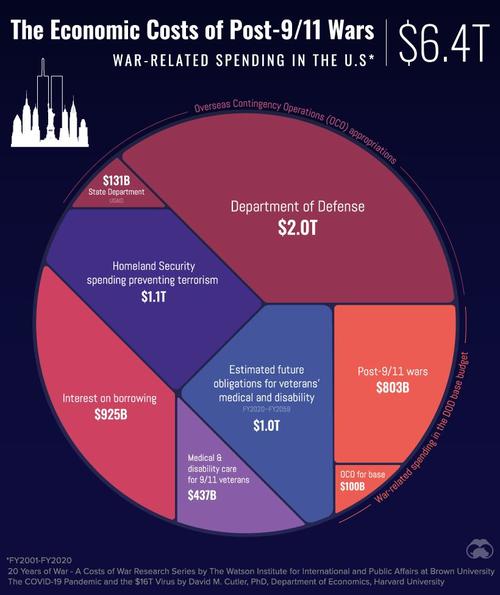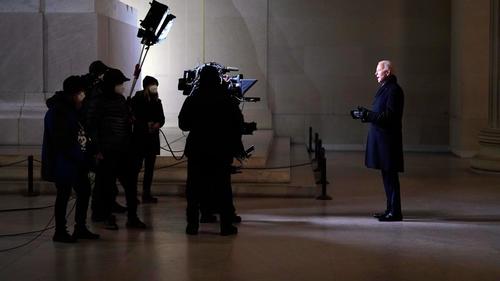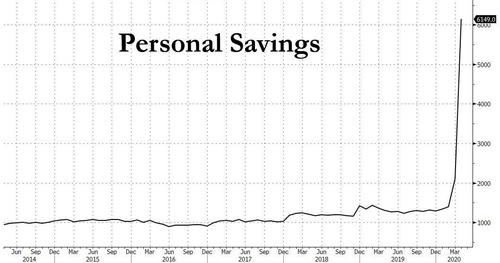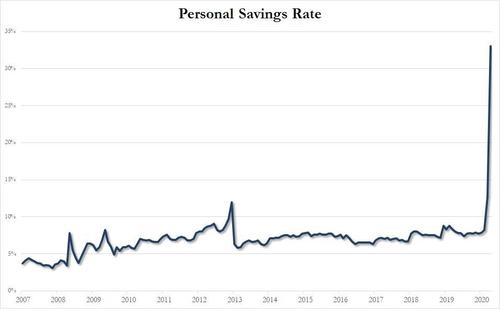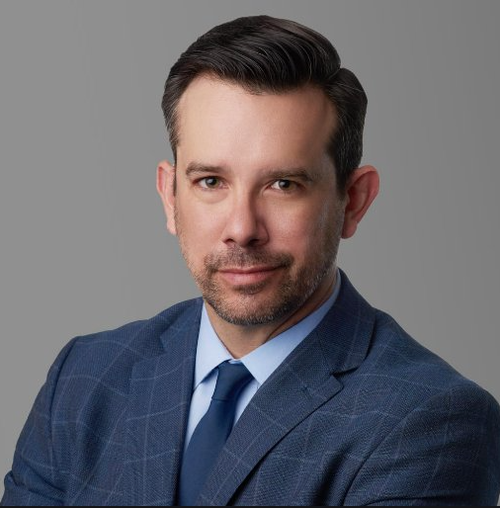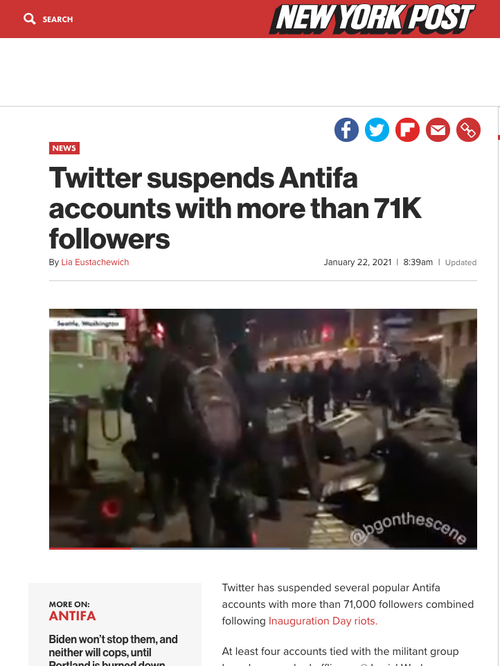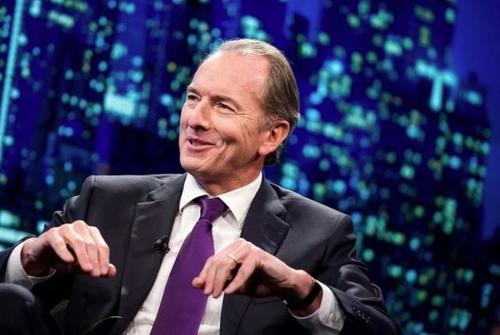Say that a state creates a law that protects speech more than the First Amendment does; for instance, say that the state law protects speakers against retaliation or exclusion by
- private employers,
- private educational institutions,
- private shopping mall owners, or
- private social media platforms.
And say that Congress preempts that state law, for instance allowing the private entities to restrict speech on their property (or by their employees or students).
Could that federal law potentially violate the First Amendment, even though it doesn’t actually forbid speech, but simply empowers private entities to do so?
Vivek Ramaswamy’s and Jed Rubenfeld’s Jan. 11 Wall Street Journal op-ed suggests the answer is yes; and on reflection, I think there is a good argument for a version of that position, though I’m not sure whether I’m persuaded by it myself. I’d therefore like to lay out in this post what I think is the best argument inspired by their claims, though not one that necessarily agrees with them in all details.
[1.] Let us begin with a precedent. (Remember, “law is the only discipline in which ‘that’s an original idea’ is a pejorative.”) In 1943, Nebraska enacted a state constitutional provision that provided that employers and unions can’t require employees to join unions. In the Railway Labor Act of 1951, Congress preempted such state statutes, allowing (but not requiring) railroad employers and railroad unions to demand union membership as a condition of employment. Employees sued a railroad and a union under the Nebraska state provision for imposing such a “closed shop” contract. The defendants raised the federal Act as a defense, arguing that it preempted the state provision.
The U.S. Supreme Court (Railway Employes v. Hanson (1956)) concluded that the Railway Labor Act’s preemption of state law needed to be evaluated under the First Amendment:
The union shop provision of the Railway Labor Act is only permissive. Congress has not compelled nor required carriers and employees to enter into union shop agreements. [But we agree with] the view that justiciable questions under the First and Fifth Amendments were presented since Congress, by the union shop provision of the Railway Labor Act, sought to strike down inconsistent laws in 17 States. [We agree that] “Such action on the part of Congress is a necessary part of every union shop contract entered into on the railroads as far as these 17 States are concerned for without it such contracts could not be enforced therein.” …
If private rights [presumably rights secured by the Nebraska no-closed-shop provision] are being invaded, it is by force of an agreement made pursuant to federal law which expressly declares that state law is superseded. In other words, the federal statute is the source of the power and authority by which any private rights are lost or sacrificed. The enactment of the federal statute authorizing union shop agreements is the governmental action on which the Constitution operates, though it takes a private agreement to invoke the federal sanction.
The Court concluded that the Act was substantively consistent with the First Amendment, because mere “compulsory membership” in a union does not necessarily “impair freedom of expression,” in part because “Congress endeavored to safeguard against that possibility by making explicit that no conditions to membership may be imposed except as respects [the payment of union dues] …. If other conditions are in fact imposed, or if the exaction of dues … is used as a cover for forcing ideological conformity or other action in contravention of the First Amendment, this judgment will not prejudice the decision in that case.” And in Machinists v. Street (1961), the Court did suggest that the First Amendment would bar spending compulsory union dues collected under the Act “for political causes which [the coerced employee] opposes,” though the Court avoided that constitutional problem by reading the statute to prohibit such exactions of dues for political purposes.
Now Will Baude and I (and others) have argued that in fact the First Amendment inquiry here was substantively misplaced, and coercive contributions that are used for political causes are generally not unconstitutional. But this specific detail (on which the Court has disagreed with us) isn’t important here. Rather, I think this case sets forth a more general principle:
Questions under the First Amendment are presented when Congress preempts state law that protects speech against private action, because the federal statute is the source of the power and authority by which any private rights are lost or sacrificed.
This does not necessarily mean that the private actor (employer and the union) somehow becomes a “state actor” (or, more precisely, a “government actor”) fully bound by the First Amendment. The government action is Congress’s preemption of the state law protection. That government action must be judged under the First Amendment. And if the First Amendment blocks that preemption, that simply means that state law springs back into force and continues to restrain the private actors.
The splintered decision in Denver Area Ed. Telecomm. Consortum, Inc. v. FCC (1996) seems to reinforce this principle: A majority of the Justices concluded there that a federal statute that allowed (but didn’t require) cable operators to block indecent material, and preempted contrary common-carrier-like rules or local control rules, was subject to First Amendment scrutiny and was indeed partly invalid. (See Part IV of the opinion and Part II of Justice Stevens’s concurrence for more details.)
[2.] OK, now let’s see how this principle might play out in three hypothetical contexts, before we turn to § 230. My own state of California has three state law rules that protect speech against private entities (one of them is based on the state constitution and the other two on state statutes, but that distinction doesn’t matter for First Amendment purposes):
- The California Supreme Court has read the state constitution as requiring large private shopping malls to allow signature gatherers and other speakers on their property. (About a half dozen states have such rules.)
- A California statute bars private employers from firing employees for their “political activity.” (About half the states have some version of these laws.)
- Another California statute bars nonreligious private colleges and high schools from disciplining students for speech that would be protected from governmental restriction. (California is the only state with such a law.)
Let’s say that Congress enacted a Private Shopping Mall Discretion Act, a Private Employer Discretion Act, and a Private Educational Institution Discretion Act, which allowed (but didn’t require) all privately owned shopping centers, employers, and educational institutions to exclude whatever speech they liked.
I think that, under Hanson and Denver Area, those statutes could be challenged under the First Amendment. Again, the statutes wouldn’t make the mall owners, employers, and educational institutions into state actors bound by the First Amendment. But the Hanson/Denver Area principle would allow visitors, employees, and students to sue under the state laws, and then try to use the First Amendment to invalidate any federal statutory defense that the defendants interpose.
This seems especially apt if the hypothetical Private Discretion Acts were viewpoint-based, e.g., “a private college shall have the power to discipline a student for the student’s speech, notwithstanding any contrary state law, if the speech constitutes ‘hate speech'”—or, if you prefer, “a private college shall have the power to discipline a student for the student’s speech, notwithstanding any contrary state law, unless the speech expresses support for federal government policies.” Such selective continued protection for some speech, or selective enabling of private suppression of other speech, should at least be subject to substantive First Amendment scrutiny (whether or not you think it might sometimes pass such scrutiny).
But under Hanson and under the logic of Denver Area, I think even a content-neutral statute preempting such speech protections would be subject to First Amendment scrutiny—to be sure, the more forgiving intermediate scrutiny applicable to content-neutral speech restrictions.
[3.] Now, if you’re with me so far, let’s see how this would play out as to § 230, and in particular § 230(c)(2)(A),
No provider or user of an interactive computer service shall be held liable on account of … any action voluntarily taken in good faith to restrict access to or availability of material that the provider or user considers to be obscene, lewd, lascivious, filthy, excessively violent, harassing, or otherwise objectionable, whether or not such material is constitutionally protected.
Imagine that a state enacts a Social Media Common Carrier Act, which provides something like this:
Just as phone companies are common carriers, which may not deny service based on their users’ viewpoints or other attributes, so social media networks may not terminate a user account or delete content supplied by a user based on the ideological viewpoint or factual assertions expressed by that user.
(Assume that the law is somehow largely limited to speech posted and viewed by users within the state, and therefore avoids Commerce Clause problems. Assume also that such an Act wouldn’t itself violate the social media network’s First Amendment rights, perhaps because a court would conclude that such a mandate is consistent with Pruneyard Shopping Center v. Robins, Turner Broadcasting System v. FCC, and Rumsfeld v. FAIR, all of which upheld some requirements that private entities open up their property to outside speakers. Both are complex questions, but questions for another day. Finally, note that the hypothetical rule isn’t quite a traditional common-carrier rule, but there are many different ways to craft such nondiscrimination mandates.)
Users sue Twitter under this state law for banning them based on viewpoints that they have expressed. Twitter says the federal § 230(c)(2)(A) preempts the state law. But the users respond that § 230(c)(2)(A) is itself a speech restriction that must be evaluated under the First Amendment; adapting Hanson, they argue:
Section 230(c)(2)(A) is only permissive. Congress has not compelled nor required social media networks to restrict user speech.
Nevertheless, justiciable questions under the First Amendment are presented since Congress, by § 230(c)(2)(A), sought to strike down inconsistent laws protecting user speech against the social media companies. Such action on the part of Congress is a necessary part of Twitter’s editing decisions as far as this state is concerned for without it such banning could not be done within this state.
If private rights secured by the state law are being invaded, it is by force of a Twitter policy made pursuant to federal law which expressly declares that state law is superseded. In other words, the federal statute is the source of the power and authority by which any private rights are lost or sacrificed.
The enactment of the federal statute authorizing social media networks to impose such speech restrictions is the governmental action on which the Constitution operates, though it takes a private decision to invoke the federal sanction.
I think this is at least a credible argument, which a court could use to evaluate § 230(c)(2)(A) as a speech restriction that triggers the First Amendment. Perhaps § 230(c)(2)(A) passes First Amendment scrutiny, but given Hanson and Denver Area, there’s a serious basis for a court to apply such scrutiny.
[4.] Finally, let’s turn to perhaps the most ambitious theory, focused on § 230(c)(1). Recall that § 230(c)(2)(A), which I quoted above, actually has little practical effect right now: It preempts state laws that would limit service provider editing discretion, but so far there are in practice virtually no such laws, and no general common carrier statutes / viewpoint discrimination bans of the sort I hypothesized (though some such bans are being contemplated by some state legislatures).
The important provision of § 230 is § 230(c)(1), which protects social media networks from libel liability (and other state-law liability) for those user posts that they don’t edit out. Section 230(c)(1) is used all the time to block such lawsuits.
But wait: Sections 230(c)(1) and (c)(2) were deliberately designed to preempt a specific rule that emerged out of two trial court cases applying New York state law, Cubby v. Compuserve, Inc. (S.D.N.Y. 1991) and Stratton Oakmont, Inc. v. Prodigy Services Co. (N.Y. trial ct. 1995). That rule, to oversimplify, was:
- When a platform doesn’t exercise editorial control over user-provided material, and instead provides “freedom of communication in Cyberspace” to its users, it is largely immune from libel liability.
- But when a platform chooses to “gain the benefits of editorial control,” that choice “open[s] it up to a greater liability than … other computer networks that make no such choice.”
This rule (to be sure, one that was in its infancy at the time § 230(c)(1) preempted it) isn’t a categorical protection like the hypothetical Social Media Common Carrier Act. But it is still a form of speech protection against private restriction: It encourages private platforms not to restrict speech, by offering them immunity if they provide unrestricted posting rights, but threatening them with some degree of liability if they restrict user speech. And it’s clear that § 230 (including (c)(1)) was indeed intended to encourage service providers to feel free to restrict speech; the title of § 230, after all, is “Protection for private blocking and screening of offensive material.”
If this analysis is right, then the constantly invoked § 230(c)(1), and not just the rarely applicable § 230(c)(2)(A), itself constitutes Congressional preemption of state law that protects speech against private action. And as a result, the § 230(c)(1)/(2)(A) combo, and not just § 230(c)(2)(A), would need to be evaluated under the First Amendment. (Recall the principle we gleaned from Hanson and Denver Area: “Questions under the First Amendment are presented when Congress preempts state law that protects speech against private action.”)
Again, § 230 might be seen as constitutionally permissible, perhaps on the theory that its preemption of this state law protection for private speakers passes muster under the intermediate scrutiny applicable to content-neutral laws. But at least courts would consider the question whether § 230, by enabling and indeed promoting private restriction of speech, notwithstanding contrary state law rules aimed at protecting speech, themselves violate the First Amendment.
[5.] As I mentioned at the outset, I’m not sure that this analysis is right. Perhaps Hanson and Denver Area (discussed in item 1) are themselves mistaken in applying First Amendment scrutiny here. Or perhaps other precedents that I’ve missed pull sufficiently in the opposite direction. Or perhaps somewhere in the path from item 1 to 2 to 3 to 4 the analogies go off the rails. And I stress again that this analysis is not identical to the Ramaswamy & Rubenfeld position, though it is inspired by that position.
But I thought I’d set forth what I thought was the strongest argument in support of that view, and see what others have to say about it. I’d love to hear people’s reactions, and to adapt my own thinking in light of them.

from Latest – Reason.com https://ift.tt/3iEj9W6
via IFTTT
